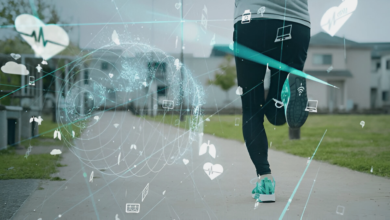
In today’s digital age, where a single image with text can spark global conversations, one university course is making waves by treating internet memes as serious literary texts. The Class That Teaches Memes as Literature (No, Really) explores how viral jokes, image macros, and video trends function as modern storytelling, social critique, and even political discourse. Far from being just silly internet distractions, memes now shape language, influence elections, and reflect cultural anxieties making them worthy of scholarly attention. This course bridges the gap between traditional literary analysis and digital culture, proving that memes are more than just entertainment; they are a new form of Memes as Literature.
As Memes as Literature evolve from niche internet humor to mainstream communication, their study becomes essential for understanding contemporary society. From “Distracted Boyfriend” symbolizing moral dilemmas to “Woman Yelling at a Cat” representing absurd conflicts, these viral artifacts carry deeper meanings that resonate across demographics. By dissecting their structure, spread, and impact, students gain critical media literacy skills preparing them to navigate an increasingly meme-saturated world.
The Class That Teaches Memes as Literature
Why Memes Belong in the Classroom
Memes have become the shorthand of the digital era, compressing complex ideas into instantly recognizable formats. What makes them unique is their ability to mutate, spread, and adapt much like oral folklore or mythological tales. The Class That Teaches Memes as Literature (No, Really) approaches them not as fleeting jokes but as cultural texts deserving of analysis. Its power lies in its simplicity and adaptability, much like Aesop’s fables.
The Literary Foundations of Memes
At their core, Memes as Literature function like micro-stories. They follow established structures such as the “Two Buttons” dilemma or the “Expanding Brain” hierarchy that allow for infinite variations while maintaining recognizable patterns. This mirrors literary genres like fables or parables, where a familiar framework delivers new messages. For example, the “This Is Fine” dog meme, depicting a canine sitting in a burning room, has been used to critique everything from climate change denial to workplace burnout.
Memes as Social Commentary
Beyond humor, memes serve as vehicles for dissent, solidarity, and political messaging. During the 2020 U.S. elections, “Bernie Sanders Mittens” became a symbol of grassroots resistance, while “Pepe the Frog” was controversially co-opted by extremist groups. These cases show how Memes as Literature can amplify ideologies, for better or worse. The course explores how viral trends like “Ok Boomer” or “How It Started vs. How It’s Going” encapsulate generational tensions, functioning as modern day protest slogans.
The Language of Memes
Memes rely on shared cultural knowledge, often referencing films, history, or even other memes. The “Drake Hotline Bling” format, for instance, uses gesture-based humor to convey approval or rejection, requiring viewers to understand the original music video. Similarly, *”Wojak” memes employ a crude drawing to express existential despair, drawing comparisons to literary archetypes like the “tragic hero.” By analyzing these layers, students learn to decode visual rhetoric a skill increasingly vital in an image-driven media landscape.
Visual Rhetoric
Visual rhetoric examines how images, symbols, and design elements persuade, inform, or influence audiences, extending beyond text-based communication. It analyzes composition, color, framing, and cultural context to reveal how visuals shape perception from political cartoons to advertising. Unlike traditional rhetoric, which relies on spoken or written arguments, visual rhetoric leverages immediacy and emotional impact, often conveying complex ideas instantly.
The Future of Meme Studies
As AI-generated memes and deepfake humor emerge, the field must adapt. Will future scholars analyze DALL-E generated images or ChatGPT meme captions as literary artifacts? This course positions students at the forefront of digital humanities, equipping them to critique and contribute to the next era of internet culture. Recognizing these connections deepens our understanding of how culture evolves through borrowing, homage, and reinterpretation.
Memes as Political Commentary
Beyond humor, memes serve as powerful tools for activism and dissent. During movements like BlackLivesMatter and MeToo, memes amplified messages, making complex issues digestible and shareable. The “Bernie Sanders Mittens” meme, for instance, became a symbol of grassroots resistance, while “Two Buttons” Memes as Literature often highlight societal dilemmas. By studying these examples, students explore how digital rhetoric influences real-world change.
Intertextuality
Intertextuality refers to the way texts whether written, visual, or digital reference, echo, or reshape other texts, creating layers of meaning through dialogue between works. It reveals how no cultural artifact exists in isolation, as memes might remix movie scenes, or novels might parody classic myths. This concept highlights the interconnected nature of storytelling, where meaning emerges from shared cultural knowledge and prior texts.
Memes in Global Contexts
While some Memes as Literature spread universally, others take on localized meanings. India’s “Moye Moye” trend, Brazil’s “Lula Livre” edits, and Nigeria’s “Sapa No Dey Show Love” memes reflect region-specific humor and struggles. The course examines how internet culture both unites and diversifies humor, showing that memes are not monolithic but shaped by linguistic, political, and social contexts. Understanding this discipline helps decode media literacy, revealing how power, ideology, and identity are constructed.
The Structure and Evolution of Memes
Memes as Literature follow recognizable patterns, much like literary genres. They rely on templates reusable formats that allow for endless variations. The “Drake Hotline Bling” meme, for example, uses a simple decision-making template that has been adapted for countless scenarios. This adaptability mirrors how myths and fairy tales evolve across cultures. Additionally, memes often employ intertextuality, referencing other media, historical events, or even other memes.
Why Memes Matter Beyond the Screen
Memes as Literature have transcended digital humor to become a cultural lingua franca, shaping politics, activism, and social movements by distilling complex ideas into shareable moments. They function as modern folklore, reflecting collective anxieties, joys, and critiques like This Is Fine” symbolizing societal denial or “Distracted Boyfriend mocking indecision. Brands and politicians now weaponize memes for persuasion.
Read More: How to Improve Effective Mental Health and Emotional Well-being 2023
Conclusion:
The Class That Teaches Memes as Literature (No, Really) is more than a novelty it’s a necessary response to how communication has evolved. Memes distill complex emotions and ideas into shareable moments, making them a legitimate form of cultural expression. By applying literary theory to viral content, the course validates internet culture as a meaningful area of study, preparing students to engage critically with the media they consume daily.
As memes continue to influence politics, marketing, and social movements, their academic examination becomes indispensable. Whether used for satire, activism, or collective coping like “Doomer” memes during the pandemic, they reveal deeper truths about society. This class doesn’t just analyze memes; it proves that Memes as Literature isn’t confined to books it’s alive, evolving, and spreading one repost at a time.
FAQs
Are memes really comparable to classic literature?
Yes like folktales or aphorisms, memes use concise formats to convey universal themes, making them a modern literary form.
How do memes impact real-world politics?
They simplify complex issues into shareable content, swaying public opinion (e.g., “OK Boomer” highlighting generational divides).
Can studying memes improve digital literacy?
Absolutely. Analyzing memes teaches critical thinking about visual rhetoric, bias, and online persuasion.
Why do some memes go viral while others fade?
Successful memes balance relatability, humor, and adaptability traits also found in enduring myths and proverbs.
Will meme studies expand in academia?
As digital culture grows, expect more courses analyzing memes alongside traditional media and literature.











